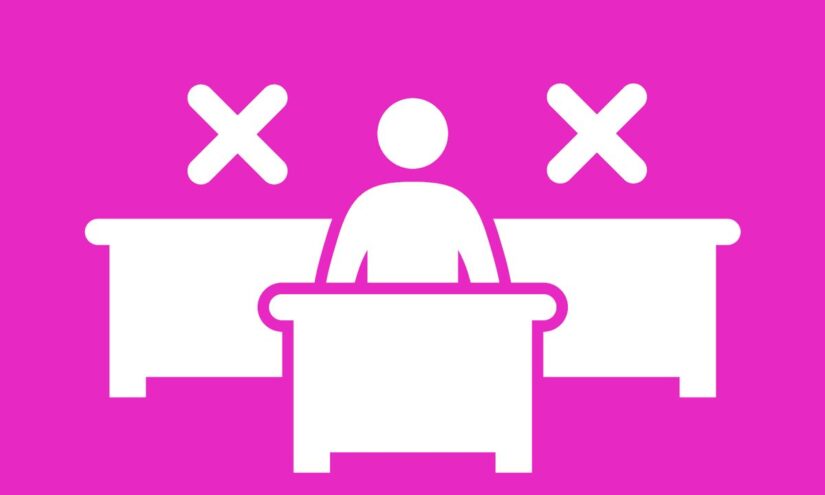During this summer, a team of students from MIT embarked on a journey to the sou …
Indiana Tackles Extreme Chronic Absenteeism as Nation Struggles
Carlos Changemaker

The State Department of Education reported that more than a third of Indiana high school seniors and 1 in 5 K-12 students were chronically absent last year. (source)
Data from the State Department of Education shows that 84 schools in Indiana had half of their students chronically absent last year. Chronic absenteeism is defined as missing at least 10% of school days, or 18 days in a year. Indiana’s goal for student attendance is 94%, but only 40% are meeting that mark. (source)
Katie Jenner, Indiana Secretary of Education, expressed concern about the chronic absenteeism rates. She stated, “Prior to Covid our learning incomes needed improvement, but when you look at our chronic absenteeism data, we’re setting up for a situation that’s a vicious cycle.” (source)
According to Jenner, students who struggle academically are the most likely to be chronically absent. (source)
Jenner also highlighted the challenges faced by educators in getting chronically absent students caught up. She explained, “When they’re missing almost a month of school, or in some cases more than a month, it’s causing significant challenges for our educators to get them caught back up.” (source)
Indiana’s struggle with student attendance is not unique. An analysis by Attendance Works and the Everyone Graduates Center at Johns Hopkins University found that 2 out of 3 students in the U.S. were enrolled in schools with high or extreme rates of chronic absenteeism during the 2021-22 school year. (source)
Indiana’s absenteeism data shows a concerning pattern. Absenteeism rates are higher in lower grades and in high school. (source)
One particularly alarming finding is that 35% of fourth graders in Indiana were chronically absent last year, according to federal data. Additionally, nearly 40% of Indiana’s fourth graders scored below basic on federal reading tests. Chronic absenteeism is associated with low academic performance, especially when students are absent five or more days in the month preceding an assessment. (source)
While Indiana had a lower absenteeism rate compared to some other states, the data within the state is still troubling. In Indianapolis, nearly 40% of students were chronically absent, while in Gary it was more than 70%, and in Muncie, it was more than 60%. (source)
Lee Ann Kwiatkowski, director of public education for Muncie Community Schools, described the situation as a crisis at every grade level. She explained that during the pandemic, parents were encouraged to keep children home even for minor illnesses, and now the district is working to change that approach. (source)
State data shows that the most vulnerable groups are the most likely to be chronically absent. Over 30% of Black students and more than a quarter of students who qualify for free and reduced-price lunch were chronically absent last year. (source)
Family poverty is a core issue contributing to chronic absenteeism. High school students have cited having to care for younger siblings while their parents work as a reason for their frequent absences. Language barriers also contribute, as some students report not understanding what their teachers are saying because they are not fluent in English. (source)
Bailly Middle School, which now goes by Bailly STEM Academy, serves a high-poverty community where chronic absenteeism and low academic achievement are prevalent. Over 85% of students at the school qualify for free or reduced-price lunch. In 2022, only 1% of sixth graders met growth targets on state math assessments, and 96% of students were chronically absent. (source)

Hedy Chang, Executive Director of Attendance Works, emphasized the importance of creating a safe and engaged school climate to improve attendance. She highlighted the need for students to feel a sense of belonging and have access to supportive adults. (source)
High-poverty communities, like the one served by Bailly STEM Academy, were hit particularly hard by the pandemic, and families may be cautious about sending their children to school due to the stress and loss they have experienced. Trust between families and schools was eroded during school closures, making it crucial to rebuild that trust to ensure student attendance. (source)
Indiana state officials have responded to the chronic absenteeism issue by developing an early warning dashboard. The dashboard will focus on individual students and include attendance data as an indicator of at-risk students. It will be piloted in the next school year. (source)
The development of the dashboard reflects Indiana’s shift in viewing absenteeism. Instead of looking at school-site data, the focus will be on individual students, allowing teachers and families to track learning outcomes and attendance data. (source)
Katie Jenner expressed hope that the dashboard will provide valuable information to parents and families, allowing them to identify if their child is chronically absent and understand the impact it may be having. (source)


